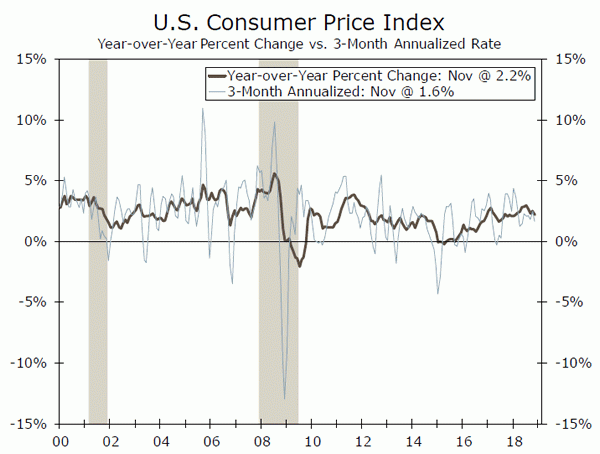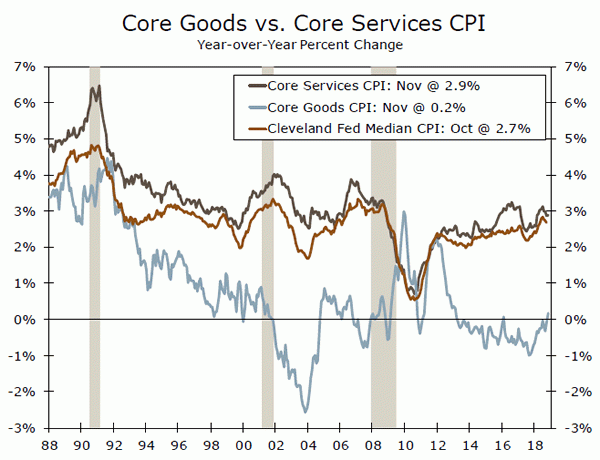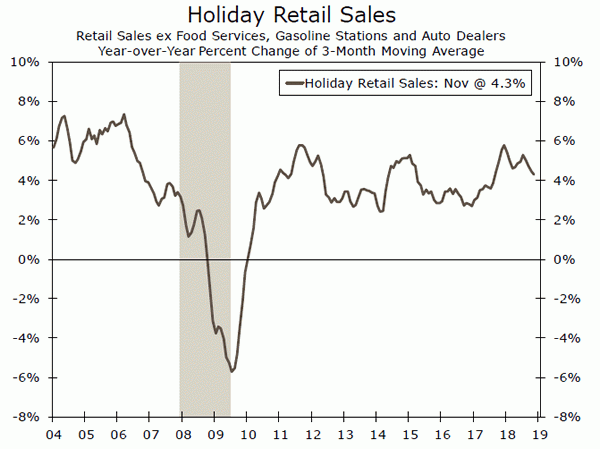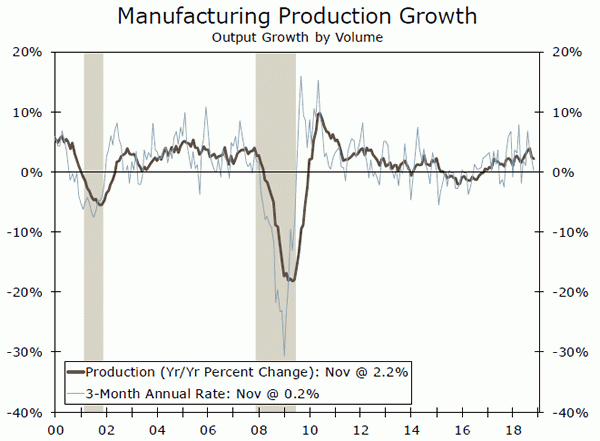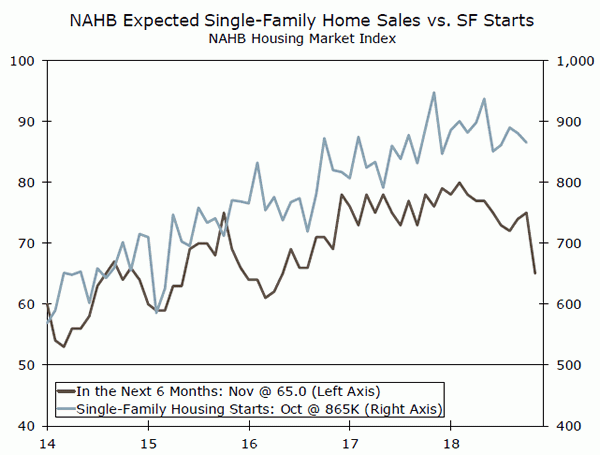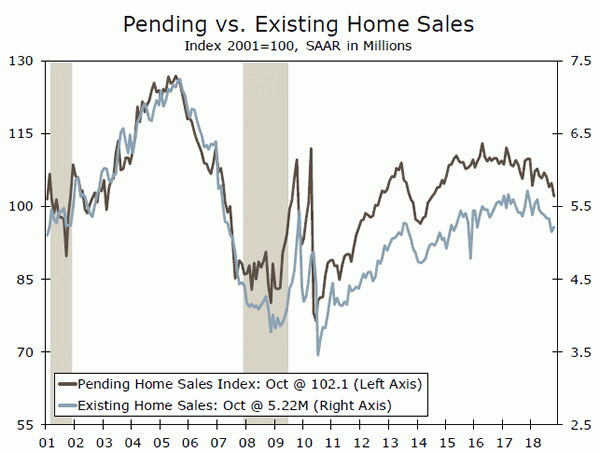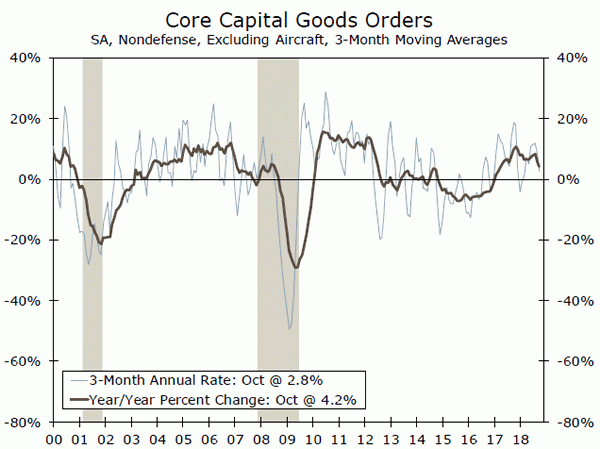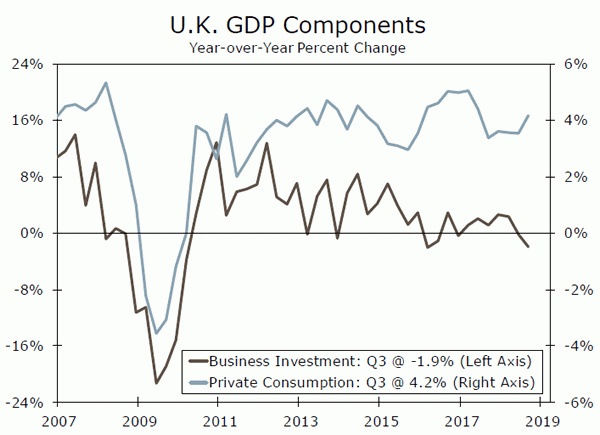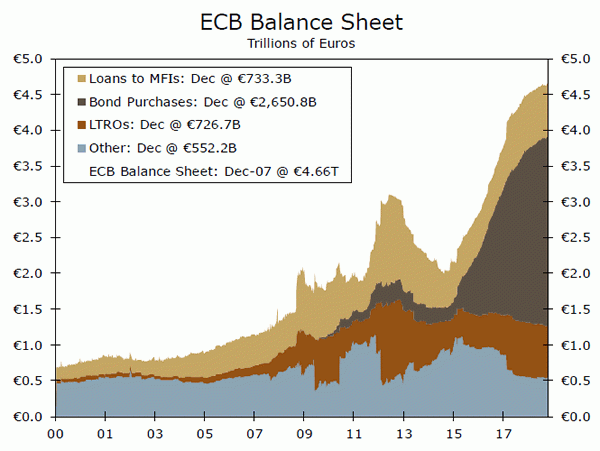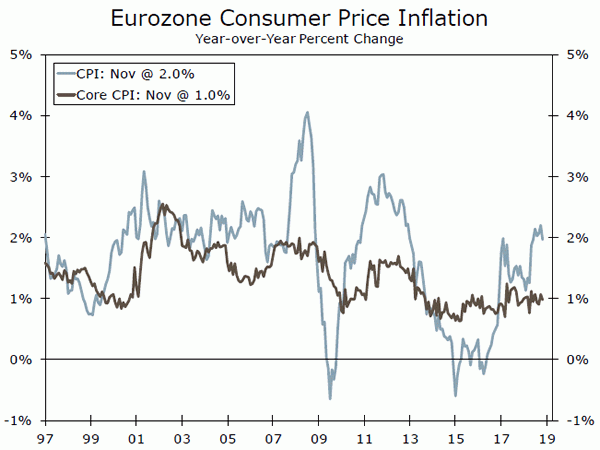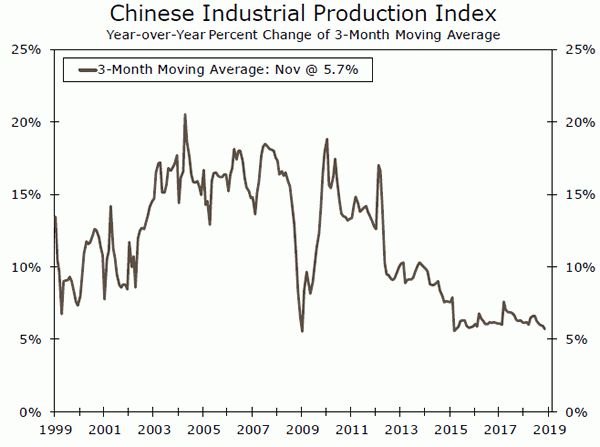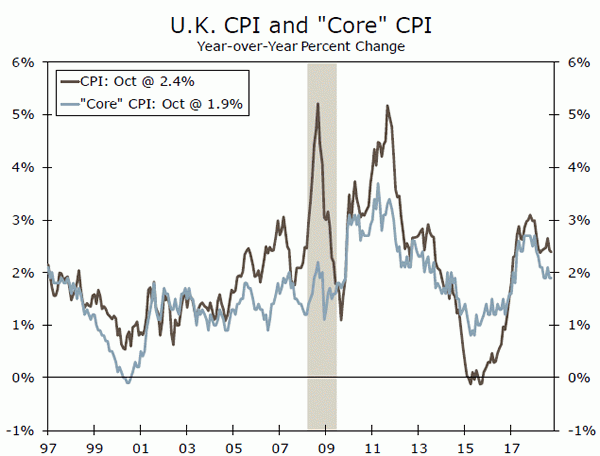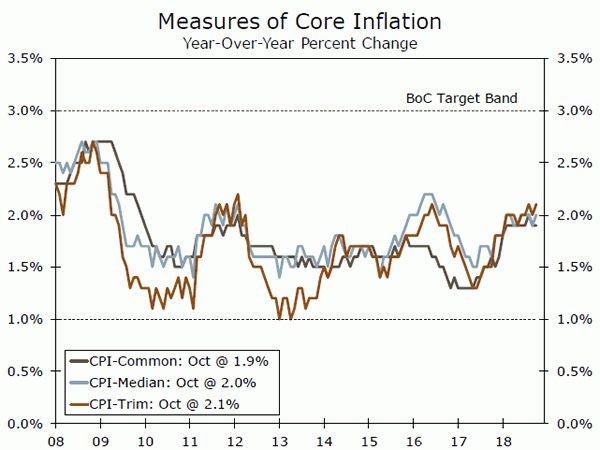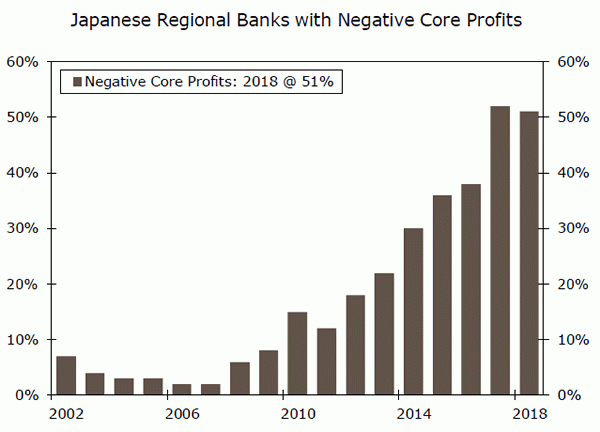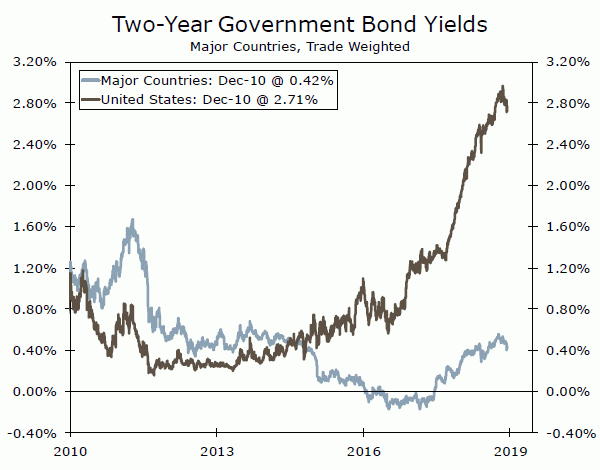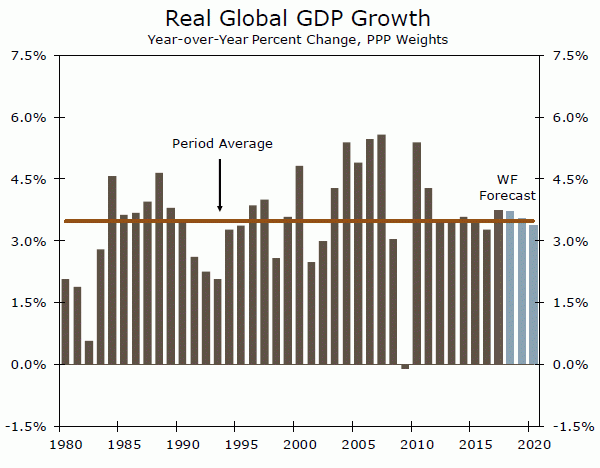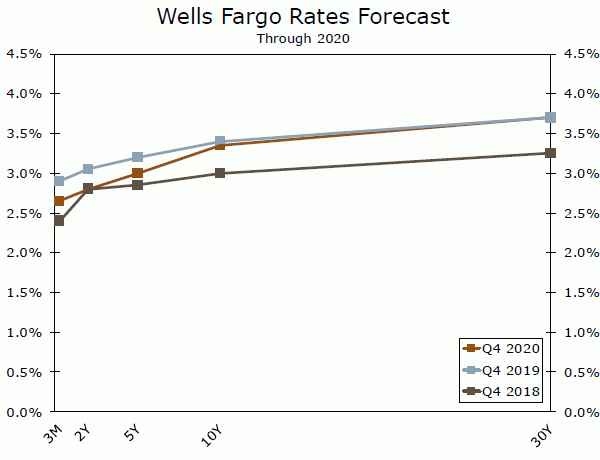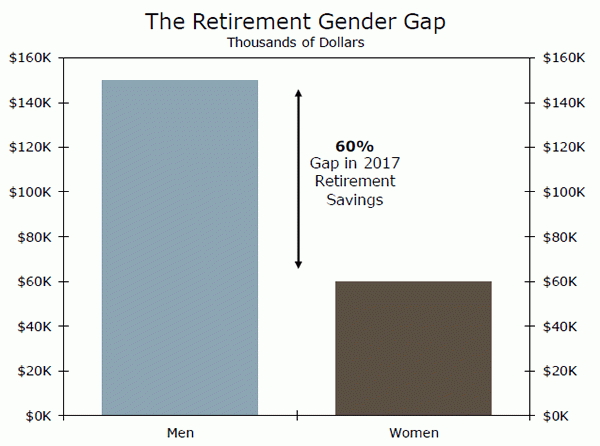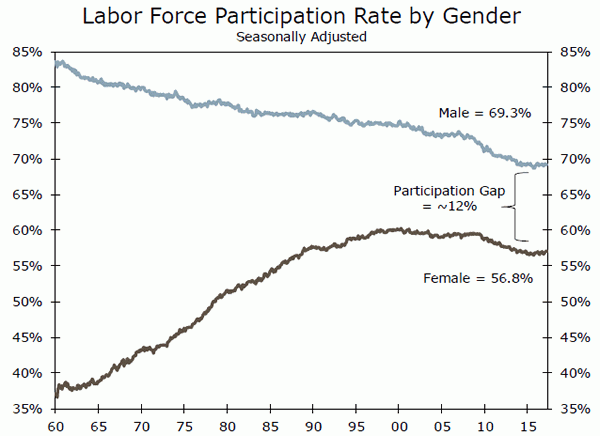U.S. Review
A Holly Jolly Price Reprieve
- Falling gasoline prices kept consumer price inflation flat in November, supporting real income just in time for the holiday shopping season.
- Holiday sales got off to a solid start in November. Excluding sales at gasoline stations, auto dealers and food service establishments, our holiday sales measure rose 0.8%. Total sales came in more modest at 0.2%, however, due in part to the aforementioned drop in gasoline prices and softer auto sales.
- Industrial production increased 0.6% last month as unseasonably cold weather boosted utilities output. Manufacturing output was flat, and further cooling is likely.
A Holly Jolly Price Reprieve
Consumers are catching a break on inflation just in time for the holiday shopping season. After rising for seven straight months, the consumer price index was unchanged in November. Lower prices at the pump thanks to oil prices tumbling have led to an easing in inflation. After increasing 2.9% on a year-ago basis as recently as July, headline CPI is up only 2.2%. With oil prices falling further in the first half of December and unlikely to return to $76 a barrel anytime soon, inflation dynamics are looking more favorable for real consumer spending in the next few months.
While headline inflation has eased up, the trend in core inflation has remained fairly steady. The core CPI rose 0.2% in November with goods and services both picking up (top chart). The 0.2% rise in core goods overstates the trend somewhat, however. Used auto prices jumped more than 2% for the second straight month, more than unwinding the 3.0% drop in September. At the same time, the resilience of the dollar is keeping the cost of imported goods muted. Like the consumer price index, import prices were held down by the drop in oil prices last month, leading to a monthly decline of 1.6%. But prices for nonfuel imports have also eased, declining 0.3% last month.
The lion’s share of core inflation, however, is services. Services exenergy, which account for 75% of the core index and 60% of headline CPI, rose a trend-like 0.2% in November. After a soft couple of readings, shelter costs picked up, but a sustained acceleration is doubtful given emerging pressure on home prices. But an increasingly tight labor market and firms’ willingness to raise prices suggest upward pressure on prices elsewhere. We expect core CPI to continue to rise a touch above 2% in the coming months after having picked up to 2.2% on a year-over-year basis in November.
The modest inflation backdrop bodes well for real consumer spending but dented retail sales, which are reported in nominal terms, in November. Total retail sales rose a modest 0.2% in November. The headline was held back by a 2.3% drop in gas station sales as prices tanked.
Excluding sales at gasoline stations, auto dealers and food service establishments, holiday retail sales rose 0.8% That points to the make-or-break holiday shopping season getting off to a solid start this year. As of November, sales in these categories were up 4.4% year-over-year, close to our call for holiday sales to rise about 4.5% this year (middle chart).
While consumer spending looks to be on solid footing, the latest data on industrial production hint at some modest cooling. Total production rose 0.6% in November, helped by a 3.3% rise in utilities as temperatures were below their seasonal averages. Despite the aforementioned decline in oil prices, mining rose 1.7% over the month, but is likely to cool in coming months given expectations of lower oil prices to remain. Manufacturing production was flat over the month. We would not be surprised to see some further moderation given the outlook for slower U.S. and global growth (bottom chart).
U.S. Outlook
Housing Starts • Tuesday
We expect November housing starts to come in below consensus, following last month’s 1.5% rise to a 1.228 million unit pace. All of last month’s increase came from the volatile multifamily sector, which has seen some renewed strength in recent months as apartment demand has proved to be much more resilient than had been expected this year. Single-family starts fell 1.8% in October, following a 1.0% drop the prior month.
Unfortunately, we expect to see more soft data on single-family starts. Sales have slowed in recent months and the November NAHB Wells Fargo Homebuilders Index plummeted eight points during the month, with expectations for future sales plunging 10 points. New home inventories have also risen, which we believe will cause builders to hold off on speculative projects. Apartment starts were also likely negatively impacted by fires out West and heavy rain across much of the South.
Previous: +1.5%, 1,228K Wells Fargo: -1.1%, 1,214K Consensus:+0.4% (Month-over-Month), 1,233K
Existing Home Sales • Wednesday
Existing home sales are also expected to come in well below the current consensus. We are projecting a 2.1% drop, following October’s 1.4% gain. That increase followed six consecutive monthly drops. Our below consensus call in November is based off the incredibly weak pending home sales data for October, which plunged 2.6% that month. October pending sales are a measure of purchase contracts signed that month which would likely close in November and December and then be counted as an existing home sale.
Data from local real estate associations strongly suggest sales weakened further in November, particularly in the West, where pending home sales plunged 8.9% in October. Most of the weakness has been along the West Coast and formerly high flying parts of the Rocky Mountain states. The South has seen less of a slowdown but sales have clearly slowed across major markets such as Dallas, Houston, Orlando, Charlotte and Nashville.
Previous: +1.4%, 5.22M Wells Fargo: -2.1%, 5.11M Consensus: -0.4%(Month-over-Month), 5.20M
Durable Goods • Friday
We expect advance orders for durable goods to rebound solidly following a 4.3% decline in October. That drop was primarily in orders for commercial aircraft, which plummeted 21.4% during the month. Orders excluding transportation equipment rose 0.1% in October. The closely watched core capital goods orders category was unchanged in October and has risen at just a 2.9% annual rate over the past three months, which hints that capital spending will likely slow in coming quarters.
Our forecast calls for a more modest 1.8% gain in headline durable goods orders, which is slightly below the 2.0% consensus call. Orders excluding transportation equipment are expected to rise just 0.2%, continuing the soft patch we are seeing in capital spending. The shortfall in capital spending may be tied to uncertainty surrounding global economic growth and trade negotiations with China.
Previous: -4.3% Wells Fargo: +1.8% Consensus: +2.0% (Month-over-Month)
Global Review
Global Outlook Still Murky Amid Policy Uncertainty
- United Kingdom Prime Minister Theresa May survived a no confidence vote, but the path ahead remains murky for the Brexit deal negotiated between her government and the EU.
- Also across the Atlantic, the European Central Bank’s Governing Council met for the final time in 2018. As expected, the ECB confirmed the end of its asset purchase program, which the central bank has used over the past few years to bring down interest rates across Europe.
- Finally, Chinese economic data for November were weaker than expected, signaling that Chinese economic growth continues to slow.
Global Outlook Still Murky Amid Political Uncertainty
The international drama began this week when it became clear that Theresa May, the Prime Minister of the United Kingdom, would face a no confidence vote this week amid the ongoing turmoil surrounding Brexit negotiations. The Conservative Party voted to maintain PM May as their leader, though the 200-117 vote illustrated the deep divisions within the current government. Had PM May lost the vote, the U.K. political situation likely would have fallen into further disarray, with no clear leader at the helm and the March 29, 2019 Brexit deadline looming.
The path ahead remains daunting, however, as PM May remains well short of the votes she needs to pass the Brexit deal negotiated between her government and the European Union. Against this uncertain backdrop, business investment in the United Kingdom has been decelerating and is down 1.9% year-over-year at present (see chart on front page). Initial data for Q4 were not much more encouraging, as data released this week showed U.K. industrial production growth in October was negative over the month. On a year-over-year basis, U.K. manufacturing output has fallen 1.0% through October, a marked decline from the 2.0-2.5% pace of growth seen at the start of 2018.
Also across the Atlantic, the European Central Bank’s Governing Council met for the final time in 2018. As expected, the ECB confirmed the end of its asset purchase program (top chart), which the central bank has used over the past few years to bring down interest rates across Europe. Though monetary policy remains extraordinarily accommodative in Europe, the ECB, like the Fed a few years ago, continues to take gradual steps towards removing some of that accommodation. Now that the asset purchases are ending, we expect the ECB to begin the next phase of its tightening by slowly hiking interest rates in the second half of next year. With economic growth still slightly above potential growth, the key to this forecast will be the inflation outlook, which remains soft relative to the central bank’s target (middle chart).
Finally, Chinese economic data on retail sales, industrial production and fixed investment for November were released on Friday. The data were weaker than expected, with retail sales and industrial production growth slowing more than expected on a year-over-year basis (bottom chart). The fixed investment data were a bit better, but on balance the data signaled that economic growth in China continues to slow.
In our annual outlook published this week, we highlighted that China is probably the biggest “swing” factor for global growth in 2019. Real GDP growth in China has been gradually slowing as working-age population growth slows, the “catch-up” phase of the country’s economic development ends and policymakers attempt to decrease leverage in the economy. These structural factors have been compounded by trade developments, including both alreadyin- place tariffs and uncertainty about future ones. We look for 6.2% real GDP growth in China in 2019, down from about 6.6% this year. If the trade war should escalate further, our forecast for Chinese economic growth would likely continue to decline, with a sub-6% forecast possible in a full-blown trade war.
Global Outlook
United Kingdom CPI • Wednesday
Inflation in the U.K. has been slowing as the impact from the pound’s post-Brexit decline continues to fade. This slowing trend in inflation has likely been supportive to growth, as falling inflation and rising wage growth from a tight labor market are supportive of real income growth. At its last meeting, the Bank of England (BoE) judged that, as a result of a closed output gap, “excess demand is expected to build, feeding through into higher growth in domestic costs.”
While this sounds like a recipe for tighter policy, the BoE will need to grapple with the tumultuous Brexit situation when it meets next Thursday. As discussed in the Global Review section, investment growth has been weak of late, and the BoE has taken notice: “business investment has been more subdued than previously anticipated, as the effect of Brexit uncertainty has intensified.” We look for the BoE to remain on the sidelines until Q2-2019, by which point we expect the worst of the Brexit uncertainty will have cleared.
Previous: 2.4% Wells Fargo: 2.3% Consensus: 2.3% (Year-over-Year)
Canada CPI • Wednesday
Core inflation in Canada is currently sitting right in the sweet spot, hovering almost perfectly in the middle of the central bank’s 1-3% target band. Other challenges have been preventing the Bank of Canada (BoC) from tightening more rapidly, including the uncertain trade policy outlook and the wobbly Canadian housing market. At its last meeting on December 5, the BoC hinted at a dovish leaning in its statement by stating that “there may be additional room for non-inflationary growth.”
We continue to expect three rates hikes from the BoC next year, as the central bank judges the output gap as essentially closed and core inflation is more or less at target. We believe the risks are tilted to the downside, however, as the timeline for USMCA passage in the United States is murky, and the Canadian housing market continues to face challenges. Put another way, two rate hikes in Canada next year is far more likely than four, in our view.
Previous: 2.4% Wells Fargo: 2.0%
Bank of Japan • Thursday
In July, the Bank of Japan (BoJ) introduced modest adjustments to its monetary policy framework, allowing for a wider trading range for yields on Japanese government bonds (JGB). This move came more in the name of improving stability and profitability in the banking system than because of an overheating economy. At present, core inflation remains well below the central bank’s target of 2%.
Looking to next week, we think the BoJ will refrain from any material changes to monetary policy. That said, while we believe the BoJ will continue with its ultra-loose monetary policy, it is our view the BoJ will make further adjustments towards less accommodative policy earlier than markets are currently anticipating. With Japan’s economy steady, along with the central bank’s objective to ensure financial stability, we forecast the BoJ to increase its main policy rate to 0% from -0.10% as well as widen the tolerance band to +/- 30bps on 10-year JGB’s as early as Q2-2019.
Previous: -0.10% Wells Fargo: -0.10%
Point of View
Interest Rate Watch
Does Monetary Policy Convergence Lead to Higher Interest Rates?
Meeting for the final time this year, officials at the European Central Bank held interest rates steady and made good on their promise to end their quantitative easing program at the end of the year. The ECB has now joined several other central banks who will now play “catch up” with the Fed in a return to more normal monetary policy accommodation. With the turn to the new year, market participants are looking ahead to see whether this monetary policy convergence strengthens and what impact, if any, there will be on U.S. interest rates.
As highlighted in our recently published 2019 economic outlook, we expect U.S. GDP growth to slow next year to 2.7% from 2.9% in 2018, in part, as fiscal tailwinds begin to fade. Raising rates at a slower pace than seen over the past year, we look for two Fed rate hikes in 2019 until monetary policy is mildly restrictive. On the international front, we also expect slower economic growth, but not so slow that it derails most developed countries’ plans to continue gradually normalizing monetary policy. We project global GDP growth at 3.6% in 2019, down from 3.7% in 2018, but in line with the pace of trend growth over the past six years. On solid growth projections, we look for rate hikes from the Bank of Canada, the European Central Bank, the Bank of England and even some modest tweaks from the Bank of Japan. Thus, should the pace of economic growth remain reasonably steady, we expect foreign central banks to gradually become more active in normalizing monetary policy.
So what does this mean for U.S. interest rates in 2019? Over the past year, rates have been primarily a function of domestic developments, including steady Fed rate increases and higher budget deficits. The question now begs, does the normalization of monetary policy abroad now take the baton and help drive interest rates higher? We believe it will. In our updated outlook, we expect short-term Treasury yields to follow the fed funds rate higher, and for longer-term Treasuries to climb as well. We project the 10-year U.S. Treasury yield will end 2019 at 3.30%, roughly in line with the Blue Chip consensus estimate.
Credit Market Insights
Is Tighter Credit on the Horizon?
Throughout much of this expansion most consumers have enjoyed relatively easy credit conditions, but could the recent rise in interest rates mean consumers may face tighter credit standards in lockstep with higher borrowing costs? According to results released earlier this month from the New York Fed’s October Credit Access Survey, there is some evidence of a modest tightening in credit conditions in recent months. But looking ahead, they look poised to remain relatively stable in the near term.
For example, the share of respondents who applied for credit over the past 12 months but were rejected surpassed 10% in the most recent survey, continuing its rise in recent months. At the same time, 7.2% of respondents reported lender-initiated account closures over the survey period, the largest share since the inception of the survey in 2013. But on net, the share of consumers reporting that they are likely to apply for credit in the next year still ticked up slightly over the survey period.
Based on the most recent survey results, while signs of tighter credit may be on the horizon, financial conditions still remain relatively solid in the aggregate. Indeed, in separately-released data from the Fed’s Senior Loan Officer Opinion Survey for Q3, the net share of bank respondents reporting increased willingness to make consumer loans rose more than four percentage points to 14%, signaling that credit remains relatively accessible for most consumers in the near term.
Topic of the Week
To Boost Growth & Shrink the Deficit, Fix the Retirement Gap
While it is far from closed, the gender gap in income is gradually narrowing, but for too many women that is small comfort as they head into their golden years without the retirement nest egg they need to sustain a vibrant retirement. According to a 2017 Wells Fargo Study, women have just 40% of the retirement savings that men have (top chart). But, given that women face unique challenges in their advancing years related to health and longevity, they will require more, not less, money than men. Those challenges are only amplified by the career and investment hurdles women face that lead to smaller nest eggs.
When half the people do not have the resources they need in retirement, it strains already tight public budgets and the Social Security system. That matters for everyone. Bolstering women’s retirement savings would not only help shore up the federal budget deficit, it would also boost economic growth during women’s working years.
Pushing back retirement may be the best for women (and men for that matter) to bolster retirement savings, while at the same time alleviating some pressure on public finances. Delaying retirement means more years adding to one’s nest egg and fewer years over which to allocate it. Filing at a later age for Social Security increases monthly payments, further reducing the risk of outliving savings.
Higher labor force participation would help individuals and couples build larger nest eggs to sustain longer retirements, and is therefore a worthy policy goal for all workers. But, there is greater opportunity for women given the lower starting point (bottom chart). In the current environment where finding labor is businesses’ number one issue and is actually becoming an impediment to the expansion, raising participation among women could bolster U.S. economic growth in addition to individual retirement accounts.




